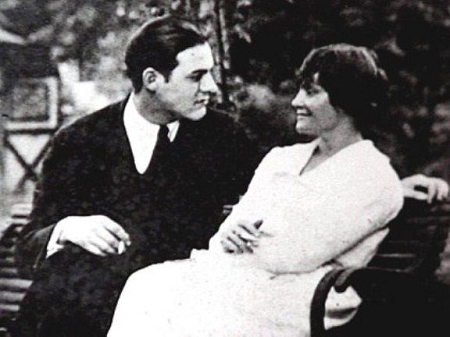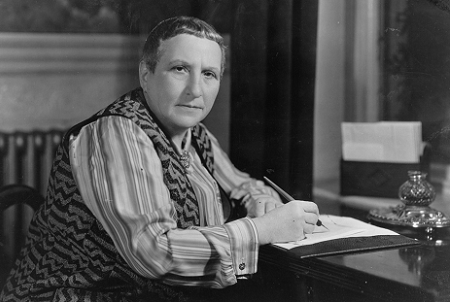Fashioned as an autobiographical account of living in Paris, France as a young, poor writer in the 1920s and during the European cultural transformation following World War One, A Moveable Feast by Ernest Hemingway is our most recent read.
 (Ernest Hemingway wrote A Moveable Feast beginning in the fall of 1957. Published after Hemingway‘s death, the book first appeared in 1964).
(Ernest Hemingway wrote A Moveable Feast beginning in the fall of 1957. Published after Hemingway‘s death, the book first appeared in 1964).
A Moveable Feast is the story of Hemingway‘s apprenticeship as a young writer, husband, and father in Paris. Hadley Richardson was the young author’s wife during this period, with the marriage partners having formally parted company by 1927. The book itself is a memoir including personal accounts, observations, and stories of what life was like in the literary circles of Paris and nearby regions in Europe during the period his family lived there. The inclusion of specific addresses of places visited was unique, at theoretically can be used as a means of visiting places that survive 100-years later.
 (From left, Ernest Hemingway and wife Hadley Richardson. Though the couple divorced, they were married during the period discussed in A Moveable Feast).
(From left, Ernest Hemingway and wife Hadley Richardson. Though the couple divorced, they were married during the period discussed in A Moveable Feast).
Many contemporaries and predecessors of Ernest Hemingway were expatriates with the writer during the era discussed in A Moveable Feast. Gertrude Stein hosted Hemingway at her salon for a period, including the young writer in what has become known as The Lost Generation. Impressions of Stein and others are discussed, sometimes at length, through the memoir.
 (Avant-garde American writer and self-styled genius Gertrude Stein used her Paris home as a salon for leading artists and writers between World War One and World War Two. Ernest Hemingway speaks of visiting Stein in A Moveable Feast).
(Avant-garde American writer and self-styled genius Gertrude Stein used her Paris home as a salon for leading artists and writers between World War One and World War Two. Ernest Hemingway speaks of visiting Stein in A Moveable Feast).
While Sherwood Anderson, John Dos Passos, Ford Madox Ford, T.S. Eliot, Ezra Pound, and others are mentioned, F. Scott Fitzgerald of renown for having written The Great Gatsby was offered a special place of resonance in A Moveable Feast from my ear in part for being represented as a bit of a hypochondriac and eccentric caught in a difficult transition with his writing and his wife at the time Hemingway gets to know something of Fitzgerald‘s character. The details of this are worth the reading, for fans of Fitzgerald and Hemingway alike.
 (F. Scott Fitzgerald was a contemporary featured prominently in Ernest Hemingway‘s A Moveable Feast).
(F. Scott Fitzgerald was a contemporary featured prominently in Ernest Hemingway‘s A Moveable Feast).
Overall, each chapter reads as a standalone experience that can be read of their own accord in mostly any sequence. Most readers will not lose understanding of the shorter narratives nor of the larger narrative of thematically related yet individually unrelated memoirs of experience from the period. I am glad to have stumbled upon this book accidentally while spending the time engaging in this read. I rate the book A Moveable Feast by Ernest Hemingway at 4-stars on a scale of one-to-five.
Matt – Saturday, May 23, 2020


 (The album cover for Moving Pictures by Rush).
(The album cover for Moving Pictures by Rush). (Left to right are Neil Peart, Geddy Lee and Alex Lifeson of Rush).
(Left to right are Neil Peart, Geddy Lee and Alex Lifeson of Rush). (Neil Peart of Rush).
(Neil Peart of Rush). (Geddy Lee of Rush).
(Geddy Lee of Rush). (Alex Lifeson of Rush).
(Alex Lifeson of Rush).